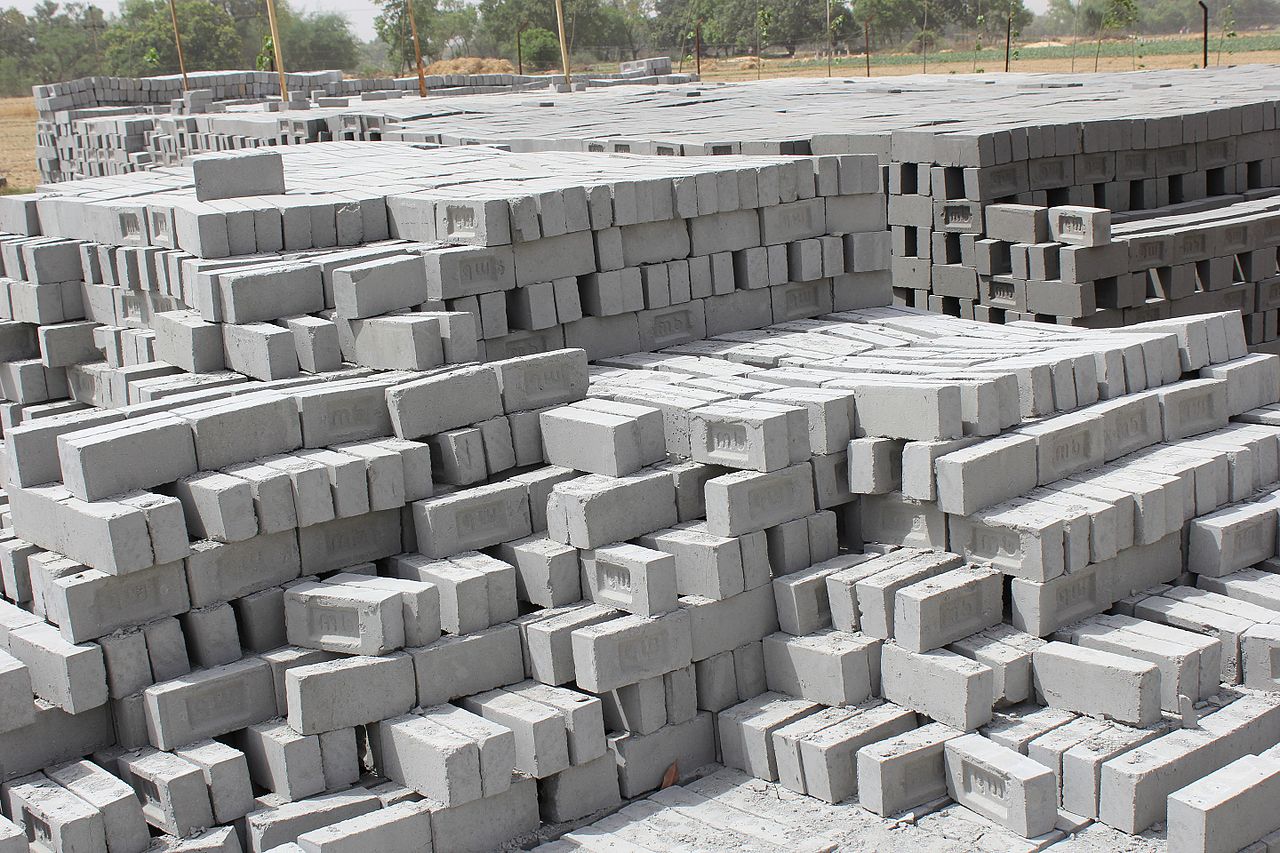Fly Ash Bricks
Fly ash bricks are hi-tech well-improved quality bricks used for construction of brick masonry structures. They are used as replacement for normal clay bricks and has better properties than it. Fly ash bricks competitive in comparison to the conventional clay bricks and provide enormous indirect benefits. The utilization of fly ash bricks results in conservation of natural resources as well as protection of environment.Fly ash bricks are building materials made from industrial waste materials like fly ash, which is a byproduct of coal-fired power plants. They are made by mixing fly ash with water, cement, and other materials to form a paste, which is then poured into molds and baked at high temperatures.

Composition of Fly Ash Bricks
The important compositions of fly ash bricks are:
- Fly ash
- Cement
- Sand
- Water
Sources of Fly Ash
72% of India's power plants are coal based. These power stations generate nearly 40 million tones of fly ash annually. Fly ash contains Co2 emitted from Thermal power plants, industries using coal as a fuel emits unwanted ash and smoke from which fly ash is produced. In all the power plants and industries, they separate the fly ash by using the cyclone converter. This fly ash is then used as a raw material for manufacture of bricks.
Nature of Pollution Caused by Fly Ash
Fly ash causes severe pollution of air and water, and its disposal gobbles up large tracts of land. Well-planned programs for proper management of fly ash are therefore being undertaken to enhance the use of fly ash in various applications, so that our already perilously imbalanced environment can be protected.
Manufacture of Fly Ash Bricks
Fly Ash Brick is nothing but a slow setting pozzalona cement mix. The process is same as making cement in cement factories whereas the clay and limestone are burnt with coal and gypsum. And it is mixed and ground to cement. In fly ash mix also the fly ash, which is burnt clay particles (oxides of clay) obtained from burning coal, which contains clay from the mines. When hydrated lime powder, gypsum are mixed and ground in a pan, the mixture gives a slow setting pozzalona cement. While the mix is pressed at low pressure at low moisture content in hydraulic machine, which is specially designed to give high pressure load at a slow rate, in the order of 350kg/square inch. At this of rate of pressure and with holding the pressure for a desired time gives ultimate strength to fly ash bricks.
Flowchart Showing the Manufacture of Fly Ash Bricks
Benefits of Fly Ash Bricks for Environment
The increase in greenhouse gases, out of which CO2 is one of the major constituents, increases the global warming year after year, causing drought and floods. The total CO2 Emissions globally account for 24,960 million tons at 1990 levels. Cement and building materials industry is one of the major contributors.
The CO2 emission is about ninety million tons out of cement and forty nine million tons out of clay bricks production in India. As per the ongoing practices in India, each million clay bricks consume about 200 tons of coal (or any other fuel with equal quantity of thermal values) and emit around 270 tons of CO2. Fly ash bricks production in energy-free route saves the emissions totally, befitting the project to qualify under Clean Development Mechanism (CDM), as envisaged by Kyoto Protocol towards the welfare of Mother Earth.
Comparison of Clay Bricks and Fly Ash Bricks
| Properties | Red Bricks/Clay Bricks | Fly Ash Bricks | Remarks |
|---|---|---|---|
| Density | 1600-1750 kg/m3 | 1700-1850 kg/m3 | Higher load bearing |
| Compressive strength | 30-35 kg/cm2 | 90-100 kg/cm2 | Higher load bearing |
| Absorption | 15-25% | 10-14% | Less dampness |
| Dimensional stability | Very low tolerance | High tolerance | Saving in mortar up to 25% |
| Wastage during transit | Up to 10% | Less than 2% | Saving in cost up to 8% |
| Plastering | Thickness vary on the both sides of wall | Even on both sides | Saving in plaster up to 15%. |
Fly ash bricks have many advantages over clay bricks, including:
- Strength: Fly ash bricks are stronger, more uniform, and denser than clay bricks.
- Weight: Fly ash bricks are 28% lighter than clay bricks.
- Waste: Fly ash bricks have a wastage of about 1%, while clay bricks have a wastage of about 10%.
- Environmental protection: Using fly ash bricks helps conserve natural resources and protect the environment.
Fly ash bricks are made by:
- Compressing at 28 MPa
- Curing for 24 hours in a 66°C steam bath
- Toughening with an air entrainment agent
- Manufacturing by inter-grinding or blending various raw materials
- Molding into bricks
- Subjecting to curing cycles at different temperatures and pressures






